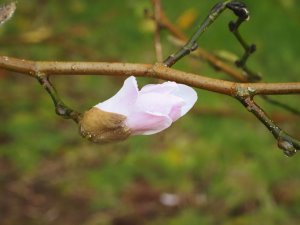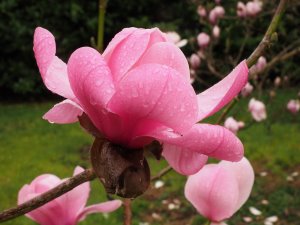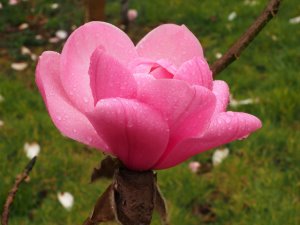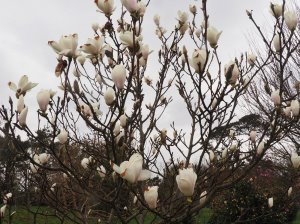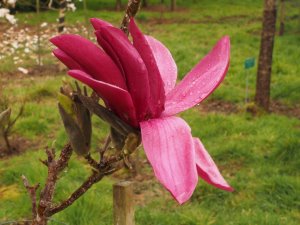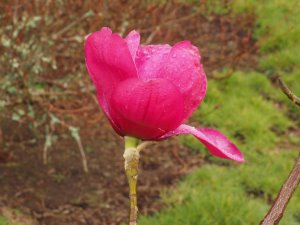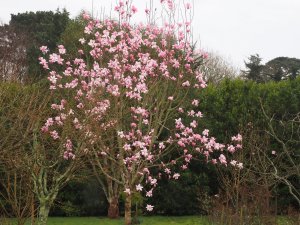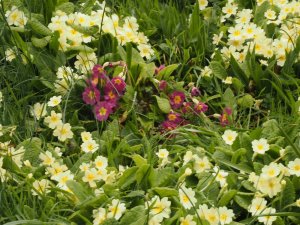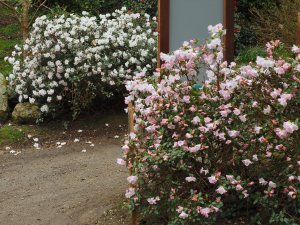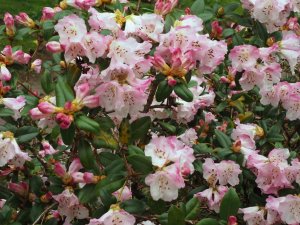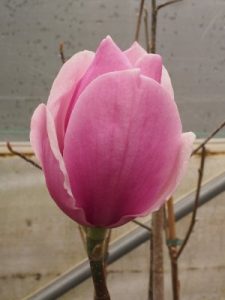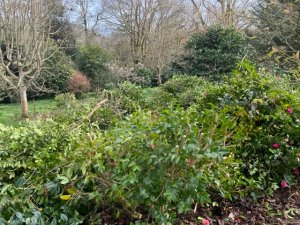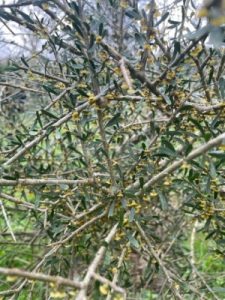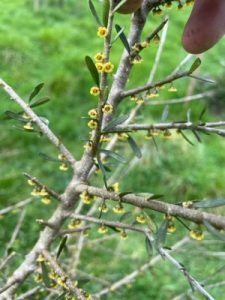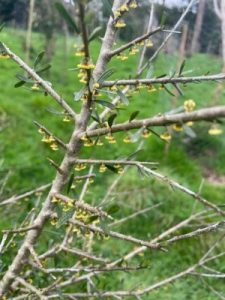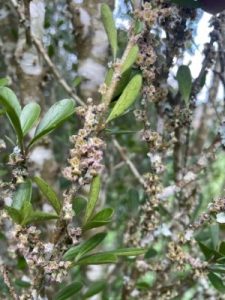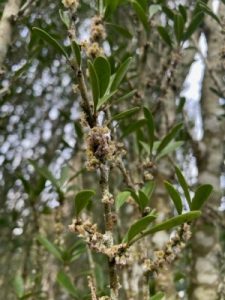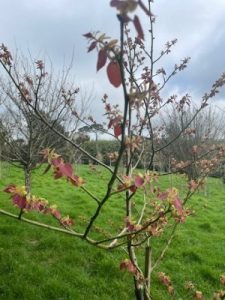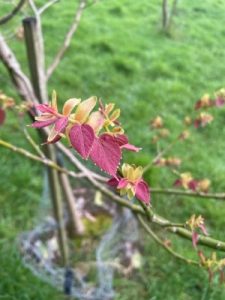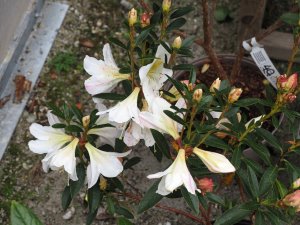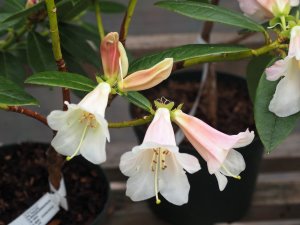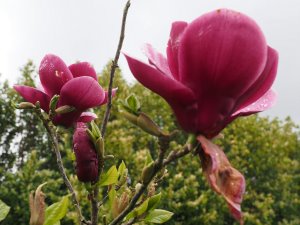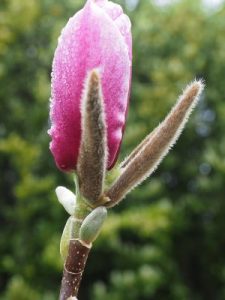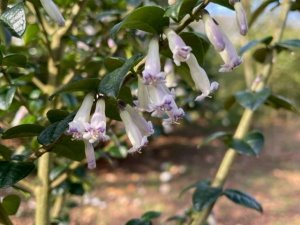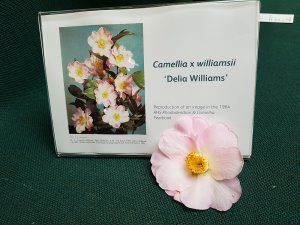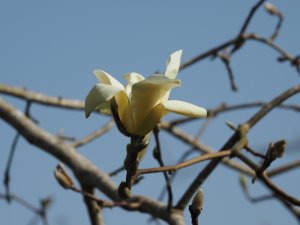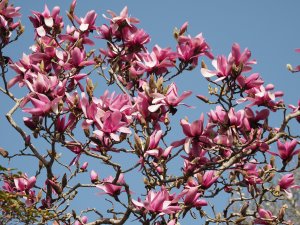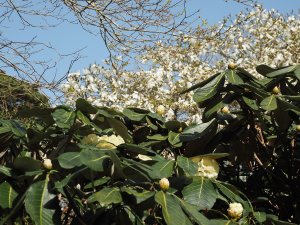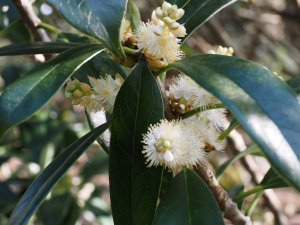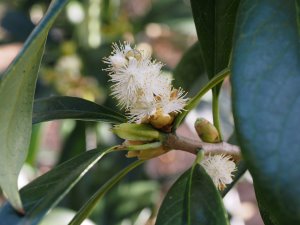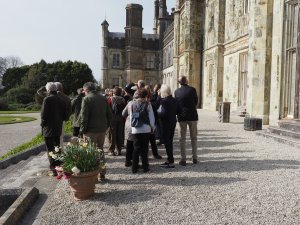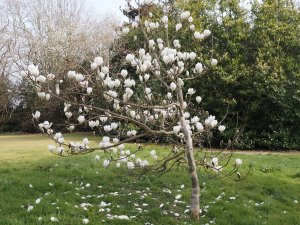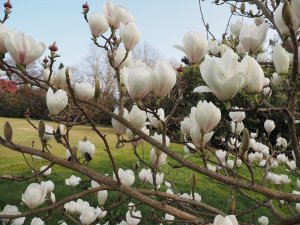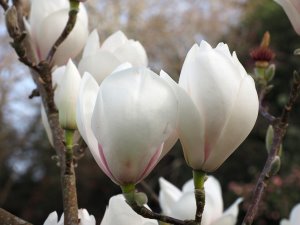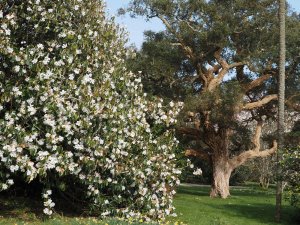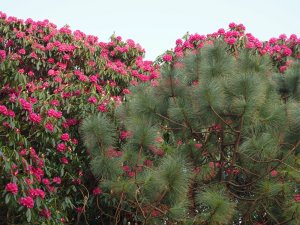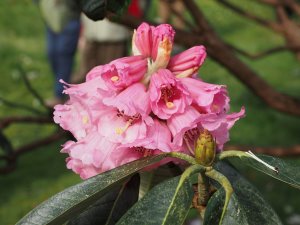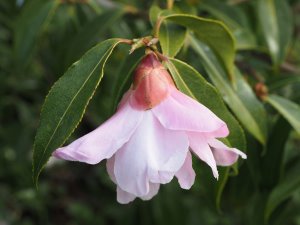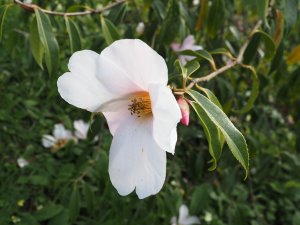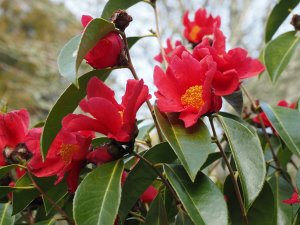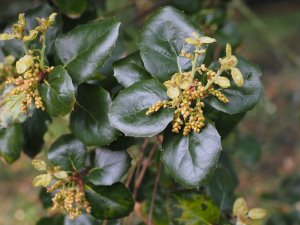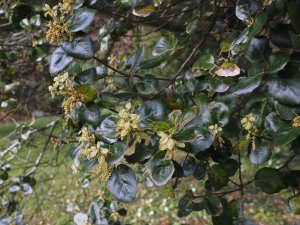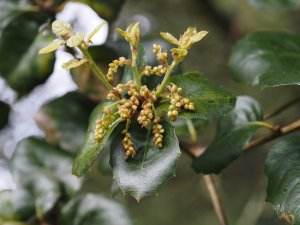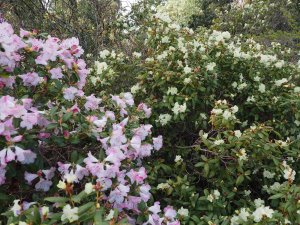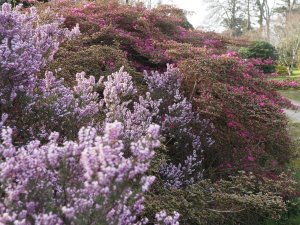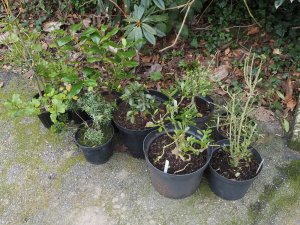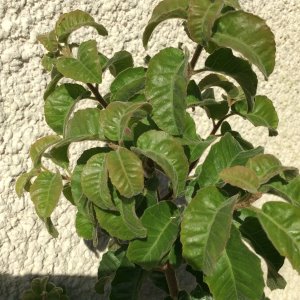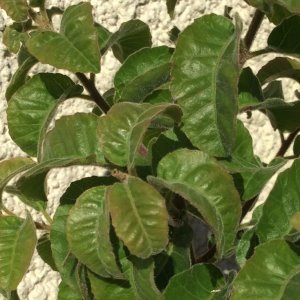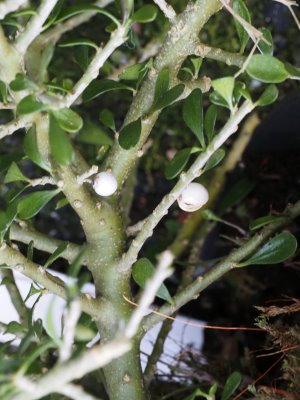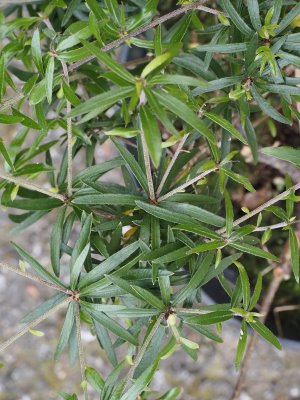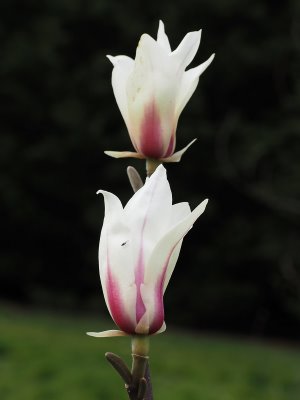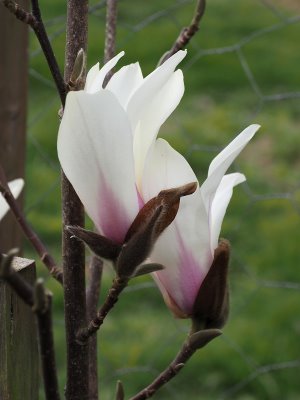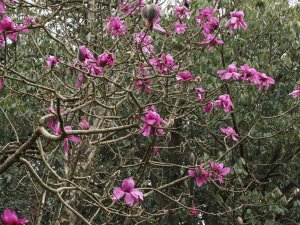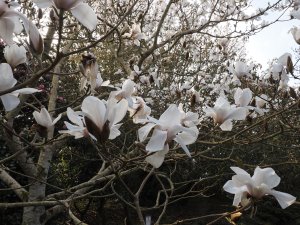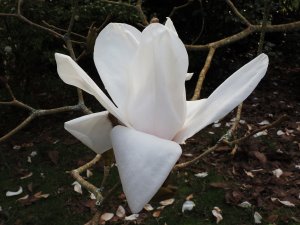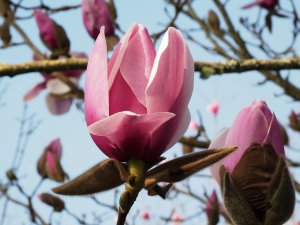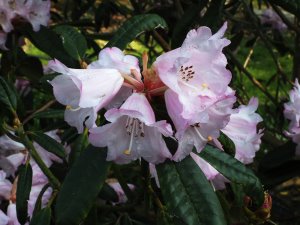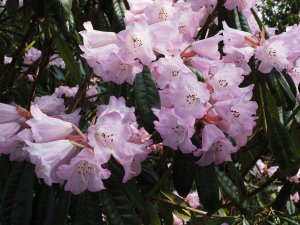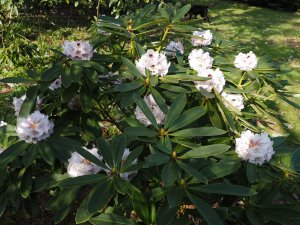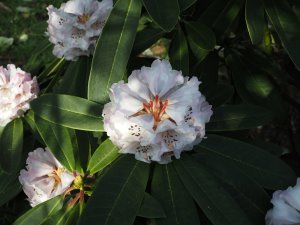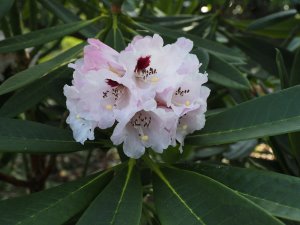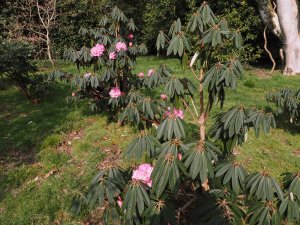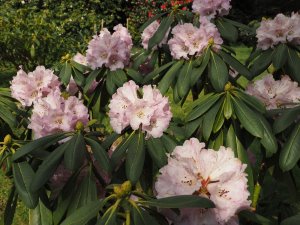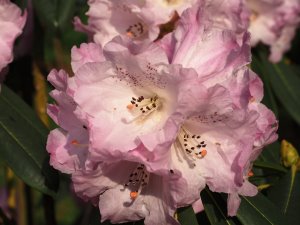2025 – CHW
Magnolia ‘Atlas’ x M. ‘Vulcan’.
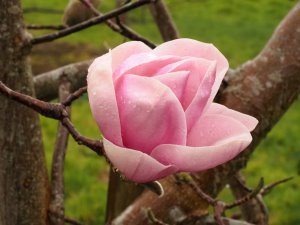
The digger is due on site for a week or two next week (if dry) to clear stumps and ‘things’ in the garden. Jaimie and the team have been cutting down a load of “sacrifice’ camellias which have done their time and need to go while uplifting other young trees so that visitors can see them better. To my mind this is the most important thing in any area of new planting which is 15-20 years old.
2022 – CHW
The grand tour of Cornish gardens with the 31 RHS Fellows continues.
Illicium philippinense (CWJ 12466) in flower in the Rookery.
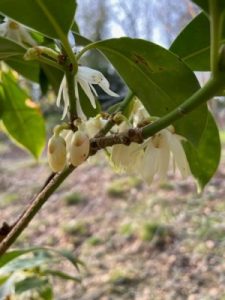
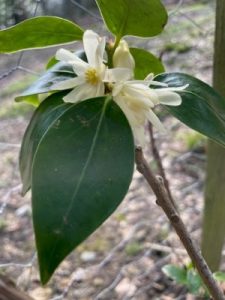
My quest for ‘Delia Williams’ is now bearing fruit! From the material that was brought in to the Rosemoor Show, not just from Caerhays, but also from Mount Edgcumbe and by Pat and Peter Bucknell, we were able to clearly identify the marked differences between the many petalled ‘Citation’ and the much neater plant ‘Delia Williams’. Even the foliage shows a marked difference between the two – ‘Citation’ being more rounded, whilst ‘Delia Williams’ leaves are longer and narrower. The ‘Delia Williams’ flowers exactly matched the 1964 photograph – see attached.
I am more determined than ever to get the record set straight in the International Camellia Register. Jim Stevens is actually planning to get involved with UK camellia registrations and is prepared to help me with this so that the plant can be correctly and individually identified in its own right as ‘Delia Williams’ together with the credited RHS Award of Merit given in 1964. There are no records at Trewithen regarding where the plant came from, but we do have the background story to add to the Register. The plant registered as ‘Citation’ by Charles Puddle at Bodnant is somewhat obscure too, but there are no leads to link ‘Citation’ from Bodnant to Trewithen so it seems a mystery as to how the two became linked. Ned Lomax, ex Glendurgan, has now taken up the position of Head Gardener at Bodnant. He has already contacted me to say that he is on the case to see what he can sleuth out at that end!
Finally, our long-planned trip here with Nick Lock to view some of the dull and rare plants in the following families – Schinus, Foresteria, Shepherdia and Melicytus. Nick had sent me pictures of his Schinus latifolius (attached here) which came from Burncoose many moons ago. We looked at what I think may be our Schinus polygamus or Schinus mole which had lost most of its leaves in the cold below Tin Garden. Neither of us are sure if it is correctly identified as either. We expected Melicytus crassifolius to have yellow flowers but ours has pinkish ones. The plant of M. crassifolius which Nick kindly gave us did have white rounded berries. I have never seen any berries on our plant. It may be another species of Melicytus or it may not but we do have another plant with smaller darker leaves which looks more true to name.
Not much further on with these dull plant puzzles.
Nick left the following plants with us:
Coprosma ‘Autumn Orange’
Coprosma grandiflora
Melicytus crassifolius
Melicytus obovata
Myrsine aquilonia
Pittosporum michei
Metrosideros ‘Mistral’
Aristolochia delavayi





